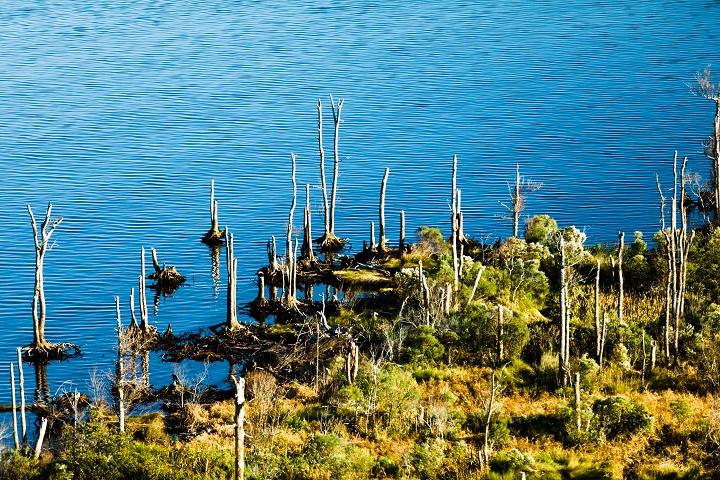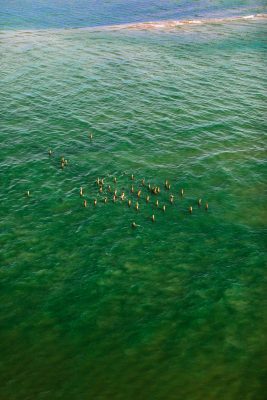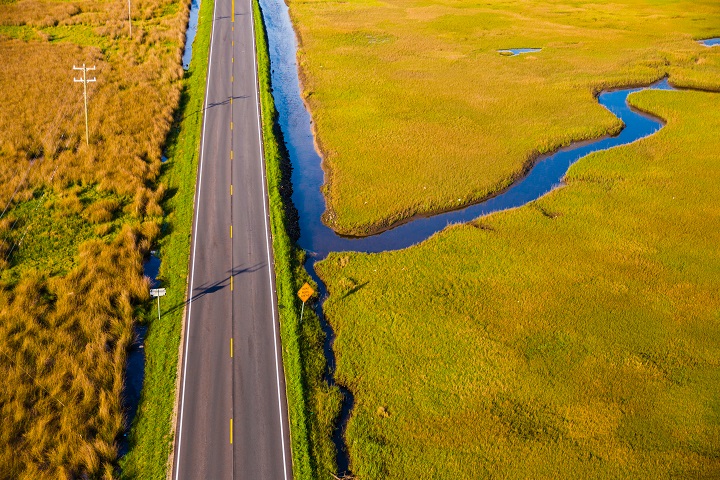
HARKERS ISLAND – There are 15 photographs on display in the Core Sound Waterfowl Museum and Heritage Center exhibition gallery. Dynamic images of coastal North Carolina. Some taken from the sky, some an abstract detail, and others a glimpse into everyday life.
The voices of men and women sharing their stories about their changing environment fill the room from a speaker overhead.
Supporter Spotlight

This is “Rising: Perspectives of Coastal Change.” A collaborative multimedia exhibition that looks at first-hand accounts of climate-related change.
The exhibition features the photography of Baxter Miller and 16 oral histories collected by Ryan Stancil, content creator, and cultural anthropologist Barbara Garrity-Blake. Team members also include museum Executive Director Karen Willis Amspacher, Alton Ballance, Ben Cahoon, Stan Riggs, Susan West, Jessica Whitehead and Margaret Cheatham Williams. The traveling exhibition will be on display in the museum gallery through Sept. 30.
In conjunction with the exhibition, the museum is bringing together fishermen, scientists and community representatives Tuesday, Aug. 14, for a “Change: Community Conversation” to talk about relationship with place, the role of change in the region and its impact today and the future.
Check-in for the event is from 9 to 10 a.m., giving time for fellowship and to view the exhibition. Sessions begin at 10 a.m. and will feature community leaders and government representatives, scientists, fishermen and visitors from the Chesapeake Bay to share their observations of changes, the effect of these changes and what adaptive measures have been taken. Organizers ask that attendees register for lunch planning purposes.
Partners and organizations that will have resource tables present include North Carolina Sea Grant, North Carolina Coastal Federation, the University of North Carolina Coastal Resilience Center, the Division of Coastal Management, the Albemarle-Pamlico National Estuary Partnership, or APNEP, and others.
Supporter Spotlight
Stancil explained that this North Carolina Sea Grant research project focuses on Beaufort, Dare, Carteret, Hyde, Tyrrell and Washington counties.
“The oral histories explore people’s experiences with change, and their thoughts about it, thoughts about their future and the ways people adapt,” Stancil said. “And this is the outreach component, we didn’t want to just do research to better understand the perspectives of change, we wanted to build some sort of tool around it for communities to use however they see fit.”
He said that the exhibition launched in Chapel Hill earlier this year at UNC’s Center for the Study of the American South. “Then we wanted to bring it back home to the communities and Core Sound is the first venue.”
Miller explained that each of the 15 photographs is paired with a clip from the oral histories that were collected specifically for the “Rising” exhibition.
“The whole ‘Rising’ project is occurring in the context of a region that is defined by change, period. And always has been,” Stancil said, citing the abandoned Diamond City on Shackleford Banks as an example. “They had to leave because of the way that environment was changing, and storms. It’s a conversation that happens in that context.”
Stancil explained that the oral history participants shared their experiences on adaptive measures and general observations, such as one person spoke about the beach in front of Cape Hatteras before it was moved, others share their experiences with flooding and farmers talk about the way saltwater intrusion caused by sea level rise affects agriculture and the way they’ve adapted.

Miller said that the catalyst for the project rests in a family story.
“My dad’s side of the family is from Buxton, and they’ve been there since the 1700s or earlier,” she began. “So my grandfather had six siblings and one was the postmistress of Buxton, Maude White. She is a famed folklore character of Buxton and she had a piece of land where the Buxton motels are at the time.
“Maude had this piece of land, oceanfront — we haven’t been able to trace how many acres it was but somewhere in the neighborhood of 7-10 acres — that she offered to my grandfather for $3,000 and he said to her, ‘Maude, that land is valueless, no fool would ever build on the beach,’” she said. This was in the ’70s and now there’s nowhere to build.
Miller said that stuck with her, her whole life.
Miller continued on how “Rising” came to be. In 2016, Garrity-Blake and Amspacher asked her to take photographs to be included in their book, “Living at The Water’s Edge: A Heritage Guide to the Outer Banks Byway.” Miller took a series of aerial photos for the book along N.C. 12, Cape Lookout National Seashore and Core Banks.
“I was just struck by the way that this place that I have spent most of my life, that I have such a relationship with, that I have such family heritage ties to, I was just struck by the way it looked from the air and how fragile it seems, but the banks prevail,” Miller said. “Seeing it from the air gave this whole new perspective of rising above the surface, rising above very complex narratives of change that people that live here have been dealing with for generations.”
Stancil continued that after hearing stories from Miller’s father, he became curious about what other stories are out there. “What do people think about this change?”

Stancil said “Rising” opened in late June in conjunction with Core Sound’s “Harm’s Way” exhibit focusing on storms that occurred over the last century, “Which is nice, the two work really well together, because ‘Harm’s Way’ is about storms and adapting and being resilient and our response to natural disaster. The two have a nice conversation together.”
Miller said that though the photos are abstract, “We wanted someone to come into this exhibition and their curiosity to be piqued at the micro level. So it’s a nontraditional approach to even depicting these issues. We really wanted to change the conversation in a way that drew different people in to thinking about planning for it and talking about it,” Miller said.
Stancil added that the hope with the exhibit is that the conversation turns to the future.
Amspacher said that Core Sound has been part of the groundwork over the past several years that has evolved into “Rising” and it has been a meaningful experience.
“Baxter’s striking photography has brought into focus the changing world we live in but seldom see in a larger context of change. This exhibition has helped bring this conversation to our communities in a very ‘close to home’ way that has made all of us more aware of what is happening around us,” Amspacher said.
“This ‘Community Conversation’ is designed to be just that; a conversation across communities who are already feeling these impacts, already adapting – as they always have – to the forces around them,” she continued. “We are looking forward to hearing from all those who share a stake in this changing world where land and water give and take.”
A Community Collaborative Research Grant, a program of North Carolina Sea Grant in partnership with the William R. Kenan Jr. Institute for Engineering, Technology and Science at N.C. State University funded this project.








